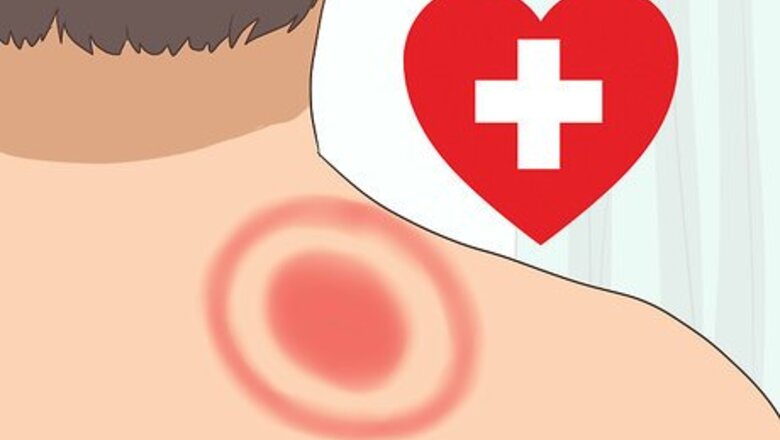
views
Treating Lyme Disease
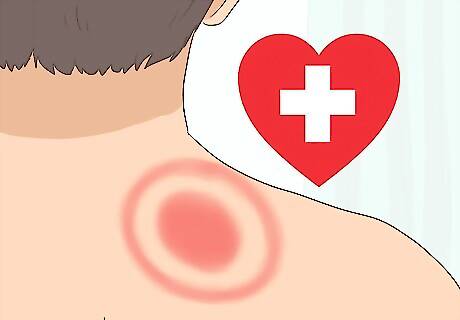
Visit your doctor to discuss your symptoms. Your symptoms can help your doctor determine if you have early or late stage Lyme disease. The most prominent sign of Lyme disease is a large rash that looks like a bullseye. Early symptoms appear up to 30 days after the bite. They include fevers, headaches, chills, fatigue, muscle aches, and swollen lymph nodes, which may cause pain in your armpits and groin area. Late symptoms can develop months after the bite. They include joint pain, facial paralysis (palsy), heart palpitations, irregular heartbeat, dizziness, or shortness of breath.

Undergo a blood test to check for Lyme disease. Your doctor may request an ELISA test if there is reason to suspect that you may have contracted Lyme disease, such as recently spending time outdoors, getting bitten by a tick, or getting a rash that you couldn’t identify. Blood tests, however, may come back negative in the first 4-6 weeks after infection, so your doctor may start treatment before getting confirmation of your diagnosis. Your doctor will test your blood with two tests: an ELISA test and a Western blot test. If both tests come back positive, you probably have Lyme disease. Unfortunately, a negative test doesn't mean that you don't have Lyme disease. Testing for Lyme disease, as well as other tick-borne diseases that may be co-infections, are not sensitive enough to identify all cases.
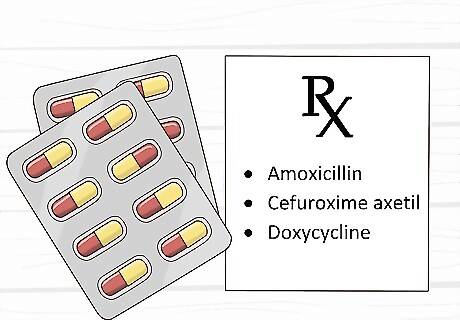
Take a prescription antibiotic for up to 3 weeks. Your doctor will prescribe a daily pill. Common antibiotics include amoxicillin, cefuroxime axetil, and doxycycline. Take the pill according to your doctor's instructions. These antibiotics may be prescribed for both early and late stage Lyme disease, but they may not be as effective in the later stages. Intravenous antibiotics may be required to treat late stage Lyme disease.
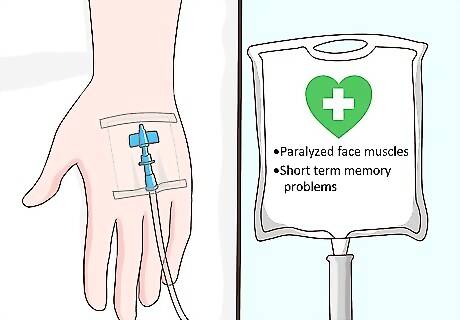
Undergo intravenous antibiotics if your nervous system is affected. As Lyme disease progresses, you may have neurological problems, such as paralyzed face muscles or short term memory problems. In this case, your doctor will likely get antibiotics delivered via an IV into your wrist. You will be hospitalized to receive these antibiotics. Your neurological conditions will also be observed during this time. Side effects of intravenous antibiotics include diarrhea, low white blood cell count, and infection.
Managing Symptoms of Lyme Disease
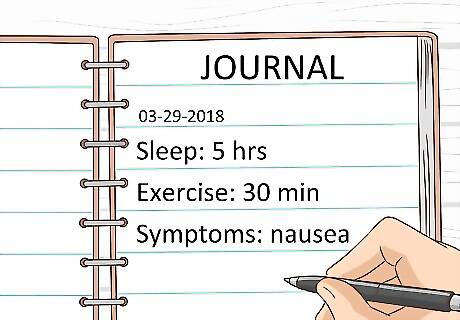
Keep track of your symptoms daily. Note how much sleep and exercise you get. Write down how you feel, including any fatigue or confusion. By keeping track of your symptoms and daily habits, you can help your doctor understand the progression of your disease. If you’re currently on antibiotics, write down any symptoms you feel, such as fever, chills, nausea, rash, or hives. This can help you and your doctor recognize if you’re having a reaction.
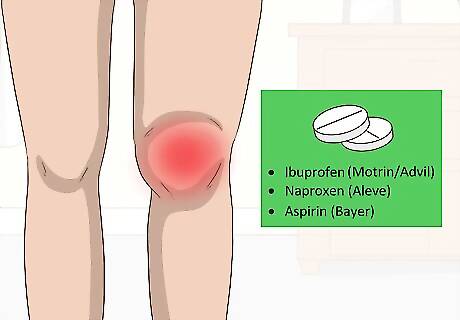
Take anti-inflammatory medication to reduce swelling and arthritis. Late stage Lyme disease can cause arthritis in your joints. To treat these symptoms, take an over-the-counter non-steroidal anti-inflammatory drug (NSAID). Follow the instructions on the label for dosage. Common NSAIDS include ibuprofen (Motrin or Advil), naproxen (Aleve), or aspirin (Bayer). If your symptoms continue after 48 hours, tell your doctor. They may prescribe you a pill with hydroxychloroquine to take in addition to the NSAIDS. When your Lyme disease heals, your arthritis will also disappear.

Take a daily probiotic to support your digestive tract. Antibiotics may kill the good bacteria in your gut, contributing to yeast infections or digestive issues. Probiotics can replace this good bacteria. Take between 5-10 billion colony forming units (CFUs) a day while using antibiotics. You can buy probiotic supplements at health food stores, vitamin stores, and online. Probiotics appear naturally in foods like yogurt, sauerkraut, pickles, and dark chocolate.
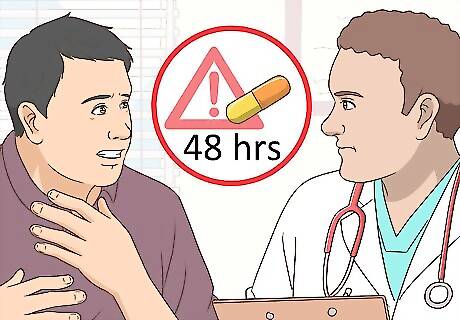
Tell your doctor if your symptoms worsen after starting medication. It is common for people with late stage Lyme disease to have a reaction known as Jarisch-Herxheimer reaction roughly 48 hours after starting treatment. Symptoms include headache, fever, chills, body aches, fast pulse, and hyperventilation. If this happens, see your doctor right away or go to an urgent care facility. Your doctor may recommend an over-the-counter NSAID to help you manage the pain. During a flare, get plenty of rest. Epsom salt baths may help.
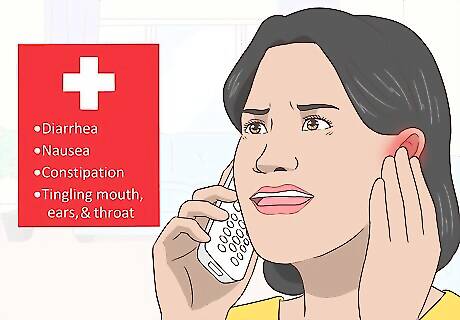
Get immediate medical care if you have an allergic reaction. Side effects of your medication might include hives, breathing issues, or a tingling mouth, ears, and throat. If you experience any of these side effects, call your doctor. If you develop hives, rash, tightness in your chest, vomiting, or difficulty breathing, get emergency medical treatment. You may be going into anaphylactic shock.
Living with Chronic Lyme Disease
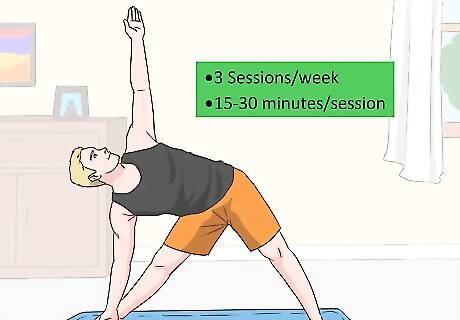
Exercise regularly to improve your energy. While Lyme disease can make it hard to exercise, exercise may help increase your energy. Aim for 3 sessions of exercise a week, with each session lasting roughly 15-30 minutes. If this is too much for you to begin with, go slowly. Do short 5-10 minute sessions with gentle exercise, like walking or yoga. When you’re first beginning, consider hiring a physical therapist. A physical therapist can work with your condition to create the right regimen for you.
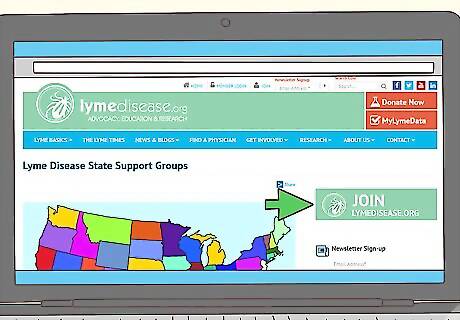
Participate in a Lyme disease support group. Living with Lyme disease can be tough, especially if medication is not helping. A support group will allow you to meet others with Lyme disease who can provide support and advice for dealing with your condition. In the U.S., you can find a local Lyme disease support group here: https://www.lymedisease.org/get-involved/take-action/find-your-state-group/. If there’s not a support group in your area, you might also find an online support group or forums for people with Lyme disease.
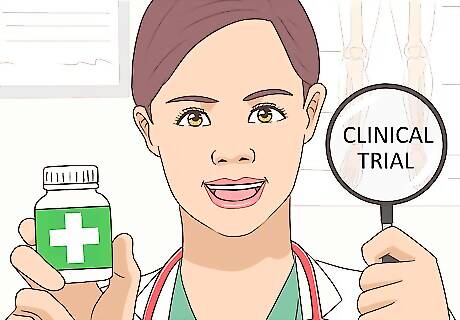
Join a clinical trial on Lyme disease. Not much is currently known about post-treatment Lyme disease syndrome. There are no known medical treatments. You may, however, be able to receive experimental treatment through a clinical trial. These trials test new medications on people with Lyme disease. To find a clinical trial, go to https://clinicaltrials.gov/ct2/home. Type in your location and condition. The database will search for trials that you may be eligible for.
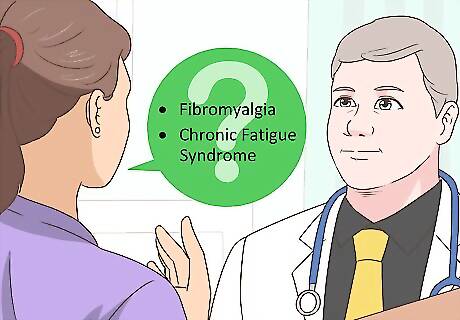
Talk to your doctor to see if you have fibromyalgia or another disorder. Post-treatment Lyme disease syndrome occurs in a very small number of people, and many people may be misdiagnosed. If your symptoms continue without relief, ask your doctor if it is possible that you have another condition. Fibromyalgia has many of the same symptoms as Lyme Disease, including fatigue, joint pain, and muscle aches. Chronic fatigue syndrome also shares symptoms with Lyme disease, including fatigue, concentration issues, muscle or joint pain, and lack of energy despite sleep.










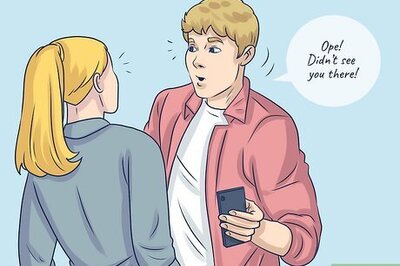







Comments
0 comment